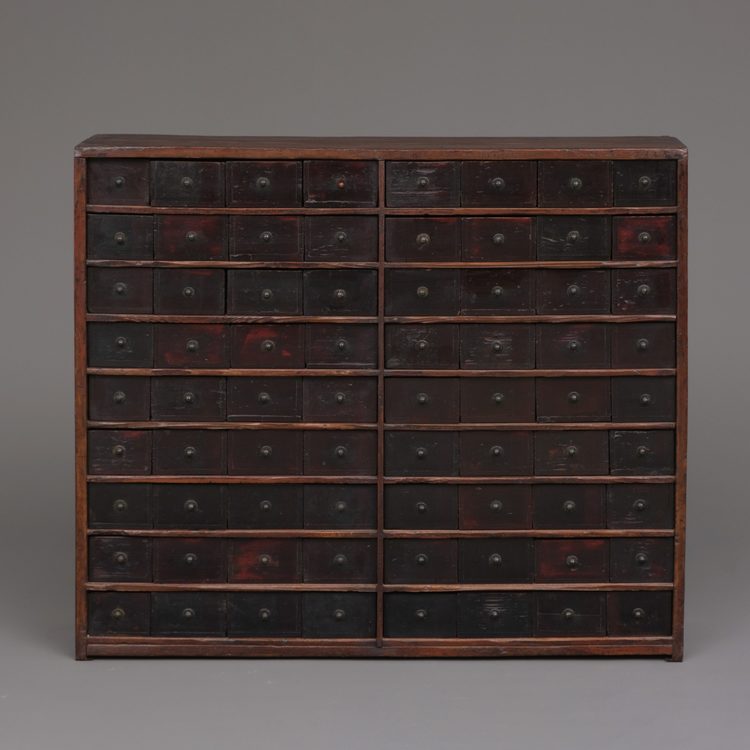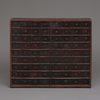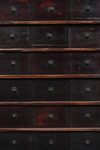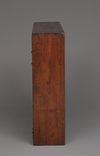A JAPANESE APOTHECARY CABINET WITH 72 DRAWERS, 18TH-FIRST HALF 19TH CENTURY
Amazing completely restored wooden apothecary cabinet 薬笥 (kusuri’dansu) with no less than 72 (!) drawers.
Made of indigenous sugi (cedar) wood varnished in a dark brown colour with a great aged patina.
Each drawer fitted with a small iron knob with a chrysanthemum-shaped back plate. When you remove a drawer, many of them have inscriptions in ink on the sides and back. Describing the correct locations, and previous contents.
Period: Japan – Second half Edo period (18th/First half 19th century).
Dimensions:
Height 68.3 cm, Width 80.5 m, Depth 19.2 cm.
In a very good completely restored condition with minor traces of wear conform age. 1 knob of later date and of copper.
Apothecary chests were used by doctors and teahouses to store medicines. They are also called hyakumi-dansu (“hundred flavors chest”) because of their many small drawers to sort and store traditional medicines. Yet another name for them is hyakume-dansu (“hundred eyes chest”) because of the many round handles that look like eyeballs.










